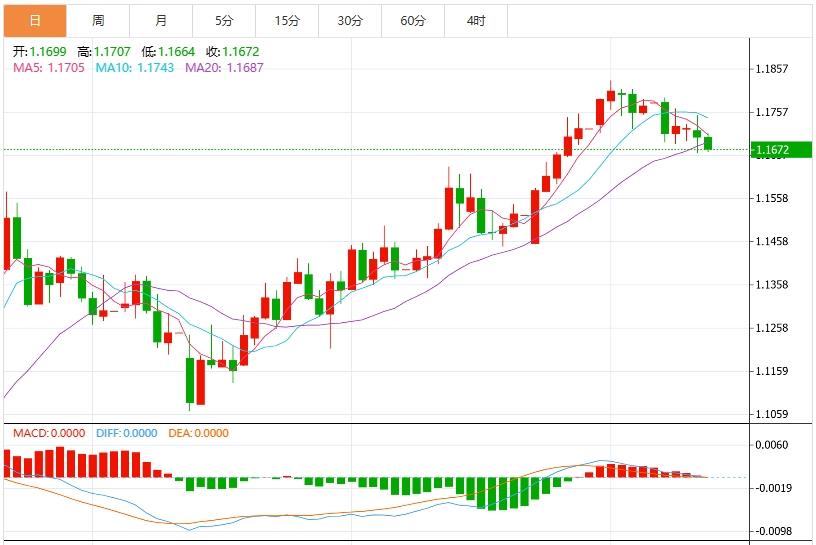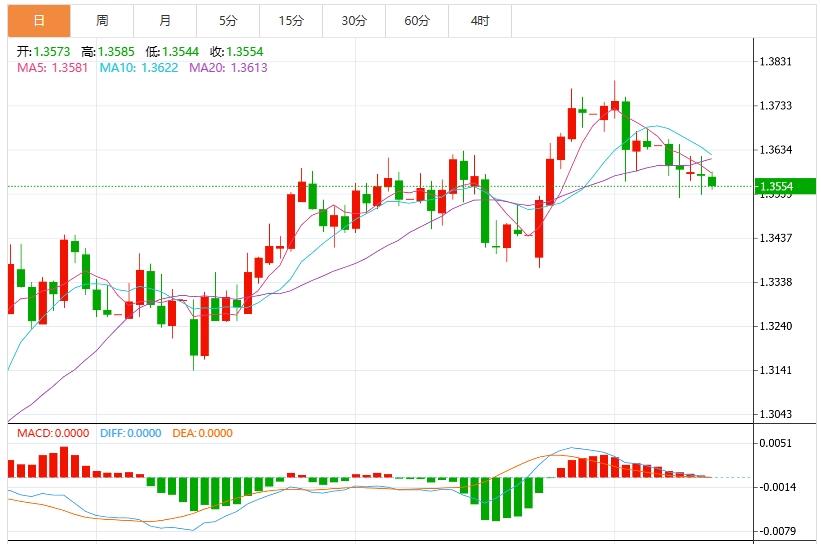Wonderful Introduction:
I missed more in life than not, and everyone has missed countless times. So we don’t have to apologize for our misses, we should be happy for our own possession. Missing beauty, you have health: Missing health, you have wisdom; missing wisdom, you have kindness; missing kindness, you have wealth; missing wealth, you have www.centrdom.infofort; missing www.centrdom.infofort, you have freedom; missing freedom, you have personality...
Hello everyone, today XM Foreign Exchange will bring you "[XM Foreign Exchange Market Analysis]: The trend of the US dollar index is struggling, focusing on the meeting of G20 Finance Ministers and Central Bank Governors". Hope it will be helpful to you! The original content is as follows:
On the Asian session on Monday, the US dollar index fluctuated narrowly. After a calm week after the independence day, the market will resume a more conventional economic data rhythm this week. The June CPI report and New York manufacturing survey will be released Tuesday, followed by June PPI data released on Wednesday. Traders will focus on June retail sales reports, Philadelphia Fed manufacturing survey and weekly unemployment benefits filing data on Thursday. June housing starts and a preliminary survey of consumer confidence at the University of Michigan will be released Friday morning. It is worth mentioning that US President Trump plans to issue a "major statement" on the Russian issue on Monday, and investors also need to pay attention. In addition, the market is concerned about the speeches of several Fed officials, the Fed's Beige Book; speeches by the Bank of England governor and Treasury Secretary, and a two-day meeting of G20 Treasury Secretary and Central Bank governors that began on Thursday (July 17-18).
Dollar: As of press time, the US dollar index hovered around 97.83, the US dollar rose against major currencies such as the yen and the euro last Friday, and President Trump announced new tariffs on Canada and other trading partners, and trade tensions heated up again. Entering July, the US dollar index rebounded from its year-on-year low of 96.37 (July 1) to around 98.00, ending its two consecutive weeks of decline. The US Treasury yields remained at a high range, and the stable performance of economic data such as non-farm employment in June provided support for the US dollar. According to data from the U.S. Department of Labor, non-farm employment added 206,000 new jobs in June, slightly exceeding market expectations.The unemployment rate remained at 4.1%, indicating that the US economy remains resilient. Technically, the downward trend of the US dollar has not reversed since February, and the current rebound may be just a technical adjustment. In terms of technical indicators, the Relative Strength Index (RSI) rebounded to 48, indicating that the buying momentum has recovered, but the average direction index (ADX) fell to 13, indicating that the trend momentum is insufficient. The US dollar index is still below the 200-day moving average (103.64) and the 200-week moving average (103.02). The long-term trend is bearish and may fluctuate in the range of 96.30-99.42 in the short term.



European News Agency reported on July 12 that Iranian Foreign Minister Abbas Aragici issued a warning to the three major European countries (Germany, France and the United Kingdom) participating in the currently suspended negotiations on Iran's nuclear program: If the three countries resume sanctions on Iran, it will automatically mean that they will be excluded from any future dialogue on this issue. "The move to restore sanctions will mean the end of Europe's role on the Iranian nuclear issue." Aragic made the above statement to several Iranian ambassadors on the 12th.
U.S. President Trump issued two tariff threat letters on the 12th, saying that from August 1, it would impose 30% tariffs on goods imported from the EU and Mexico. The European Union, the largest trading partner of the United States, immediately stated that it would counter it if necessary. So far, Trump has issued tariff conditions to 24 countries and 27 EU member states. Analysts said that the trade turmoil caused by these letters will eventually force American consumers to pay.
Ukrainian parliament member Alexander Dubinsky (detained in a pre-trial detention center for suspected treason) said in an interview that the United States has allocated only $300 million, accounting for less than 10% of the promised $3.8 billion. Dubinsky posted on Telegram: "Look at how the 'victory' of US military aid works. First, cutting off aid forced Zelensky to accept the United States' view on further negotiations with Russia. After receiving the relevant signal, $300 million in aid was thawed, www.centrdom.infopared with the previously agreed total military aid of $3.8 billion. "The lawmaker pointed out that the restored aid accounts for less than 10% of the total possible aid. He stressed that this is equivalent to a 90% reduction in aid.
Natixis analyst John Briggs said that the White House's increasing pressure on Powell has not been fully priced by the U.S. Treasury market. Investors are pricing this year's rate cut, which has lowered short-term yields. The faster rise in long-term yields are usually attributed to concerns about the U.S. fiscal deficit. "Unless we can better understand Trump's preference for the next Fed Chairman, I don't think the market will be affected in pricing," Briggs said. Powell has shown that he will remain until his term ends in May. Trump is expected to pick one more Dove’s successor.
Robert Kaffsic, a capital market economist at the Bank of Montreal, Canada, said that Trump’s letter to Canadian Prime Minister Carney on trade shows that regardless of the outcome of Trump’s talks with Carney, the U.S. tariffs on Canadian imports will continue. Trump warned in the letter that if Canadian imports do not meet the existing US-Mexico agreement provisions, he would face higher tariffs of up to 35%, and imply that tariffs targeting specific industries will continue to exist. Trump also mentioned that if Canada cooperates more with Washington in curbing fentanyl smuggling, he might consider adjusting tariff levels. Kafsic pointed out: “It seems that the final result is increasingly unlikely that there is no such lasting tariff. ”
Bank ofInterest rate strategists pointed out in a report that the Bank of England may slow down the pace of quantitative tightening from October, reducing the annual Treasury bond reduction to £60 billion from the current £100 billion. Bank of America said the slowdown in the pace of quantitative tightening may be due to the operation being in fact tightening the monetary policy environment, putting additional pressure on the economy. Therefore, adjusting the pace will help alleviate its impact on financial conditions and economic growth.
The above content is all about "[XM Foreign Exchange Market Analysis]: The US dollar index is struggling, focusing on the meeting of G20 Finance Ministers and Central Bank Governors". It was carefully www.centrdom.infopiled and edited by the XM Foreign Exchange editor. I hope it will be helpful to your trading! Thanks for the support!
Due to the author's limited ability and time constraints, some content in the article still needs to be discussed and studied in depth. Therefore, in the future, the author will conduct extended research and discussion on the following issues: